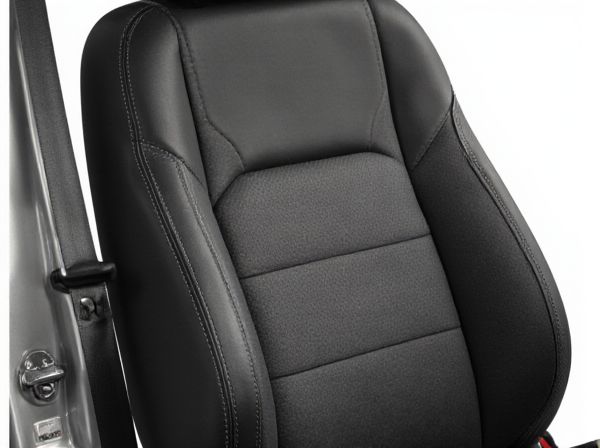
Photo illustration: Reclining Seat vs Fixed Seat
A reclining seat offers adjustable comfort, allowing you to customize your seating position for optimal relaxation during long trips, while a fixed seat provides consistent support without adjustment options. Your choice depends on whether you prioritize flexibility and ergonomic benefits or prefer the simplicity and durability of a stationary design. Reclining seats are ideal for passengers seeking personalized comfort, whereas fixed seats suit those who value stability and straightforward maintenance.
Table of Comparison
| Feature | Reclining Seat | Fixed Seat |
|---|---|---|
| Adjustability | Allows angle adjustment for comfort | Fixed position, no adjustability |
| Comfort | Enhanced comfort during long drives | Basic comfort, less ergonomic |
| Safety | Meets safety standards with locking mechanism | Stable, fewer moving parts, highly durable |
| Maintenance | Requires occasional checks for reclining mechanism | Low maintenance, simple design |
| Cost | Generally higher due to complexity | More affordable and cost-effective |
| Weight | Slightly heavier because of moving parts | Lighter, minimal components |
Introduction to Reclining and Fixed Seats
Reclining seats offer adjustable backrests that allow passengers to customize their seating angle for enhanced comfort, commonly found in airplanes, theaters, and vehicles. Fixed seats maintain a rigid, non-adjustable position, providing structural simplicity and maximizing space efficiency in settings like auditoriums or stadiums. The choice between reclining and fixed seats depends on factors such as user comfort preferences, space constraints, and application-specific requirements.
Key Differences Between Reclining and Fixed Seats
Reclining seats offer adjustable backrests that enhance comfort by allowing users to change their seating angle, while fixed seats maintain a permanent, upright position providing consistent support. Reclining seats often include additional features like padded headrests and lumbar support, ideal for long-duration sitting, unlike fixed seats which prioritize simplicity and durability. These differences make reclining seats preferred in premium settings such as airlines and theaters, whereas fixed seats are common in public transport or standard office environments due to cost-effectiveness and maintenance ease.
Comfort Comparison: Reclining vs Fixed Seat
Reclining seats offer enhanced comfort by allowing users to adjust the backrest angle, promoting better posture and reducing fatigue during long periods of sitting. Fixed seats maintain a rigid position, which can lead to discomfort and increased pressure on the lower back, especially during extended use. Ergonomic studies show that reclining mechanisms help distribute body weight more evenly, making them preferable for environments demanding prolonged seating comfort.
Space and Legroom Considerations
Reclining seats typically offer enhanced legroom and adjustable space, allowing passengers to customize their seating position for greater comfort during long journeys. Fixed seats, while often more compact and space-efficient, provide limited legroom and no flexibility in seat angle, potentially leading to discomfort on extended trips. Airlines and transportation providers balance these options based on cabin space constraints and passenger comfort preferences.
Durability and Maintenance
Reclining seats generally require more maintenance due to their complex mechanisms and moving parts, which can wear out or malfunction over time, impacting overall durability. Fixed seats offer superior durability as their simpler construction reduces the likelihood of mechanical failure and minimizes maintenance needs. Choosing fixed seats ensures long-term reliability in heavy-use environments where durability and low upkeep are critical.
Passenger Preferences and Satisfaction
Passenger preferences for reclining seats often stem from a desire for enhanced comfort and personalized space, significantly increasing overall satisfaction during long journeys. Fixed seats, while more affordable and space-efficient, may lead to discomfort and lower satisfaction levels, especially on extended flights. Airlines balancing these options tend to improve customer experience by offering reclining seats in premium cabins and fixed seats in economy, aligning with passenger expectations and budget constraints.
Safety Factors: Reclining vs Fixed Seat
Reclining seats in vehicles may pose increased safety risks during collisions due to altered occupant positioning, which can reduce the effectiveness of seat belts and airbags. Fixed seats maintain a consistent posture that ensures optimal restraint system performance and minimizes potential injuries during impact. Studies indicate that fixed seats offer better protection by keeping occupants properly aligned with safety devices, reducing the likelihood of serious trauma.
Cost Implications for Airlines and Consumers
Reclining seats typically increase manufacturing and maintenance costs for airlines due to their complex mechanisms and additional materials compared to fixed seats. Airlines face higher expenses in fuel consumption as reclining seats occupy more space, reducing passenger capacity and overall revenue potential. For consumers, reclining seats often come with premium pricing or fees, reflecting both the added comfort and the airline's need to offset higher operational costs.
Environmental Impact and Sustainability
Reclining seats require additional mechanical components and materials, which increase manufacturing energy consumption and carbon footprint compared to fixed seats. Fixed seats, with simpler designs and fewer moving parts, promote material efficiency and reduce waste in end-of-life disposal, supporting circular economy principles. Airlines adopting fixed seating can lower overall environmental impact through reduced resource use and lighter cabin weight, contributing to improved fuel efficiency and lower emissions.
Which Seat Type is Best for You?
Choosing between a reclining seat and a fixed seat depends on your comfort preferences and usage context. Reclining seats offer adjustable angles that enhance relaxation during long trips, making them ideal for travelers prioritizing comfort and rest. Fixed seats provide sturdy support with minimal movement, suitable for those valuing stability and straightforward seating without the need for adjustments.
 caratoz.com
caratoz.com